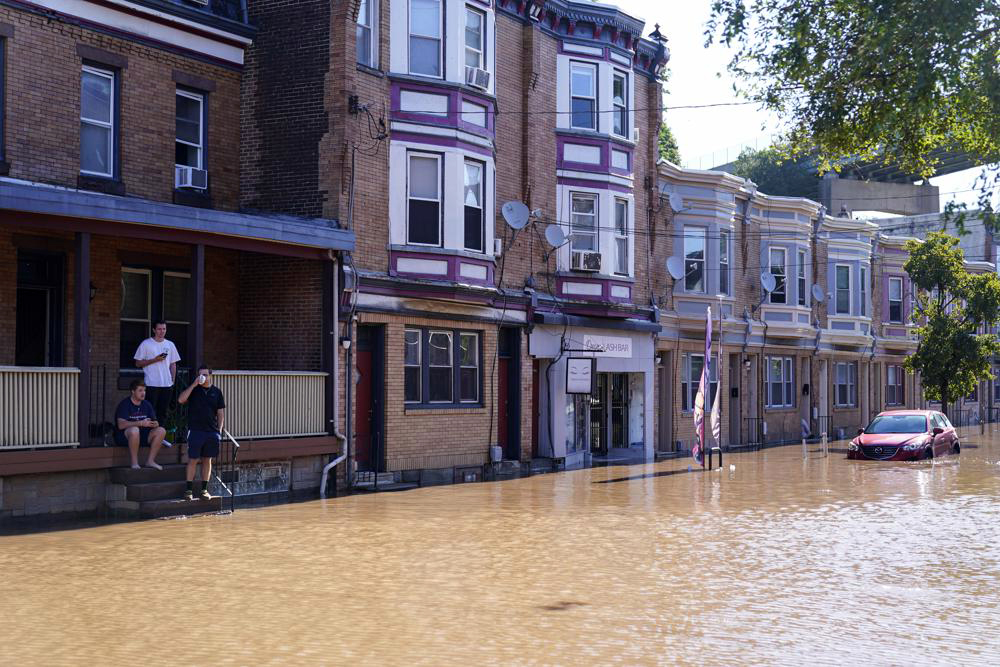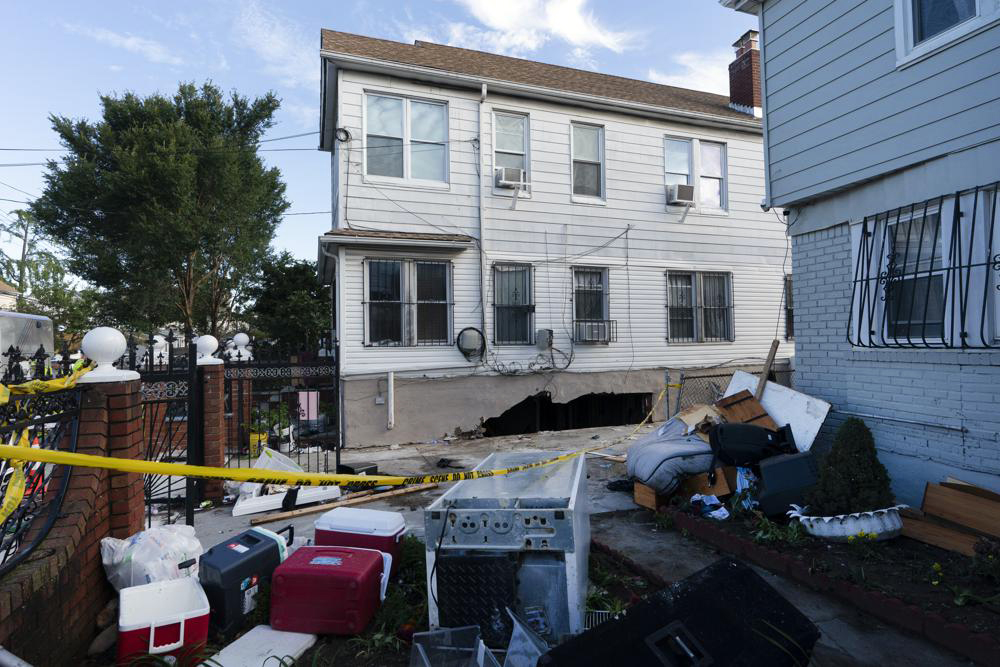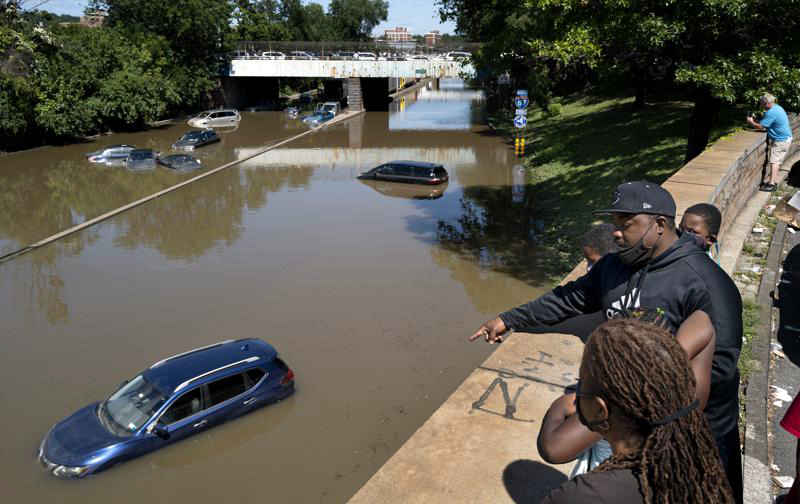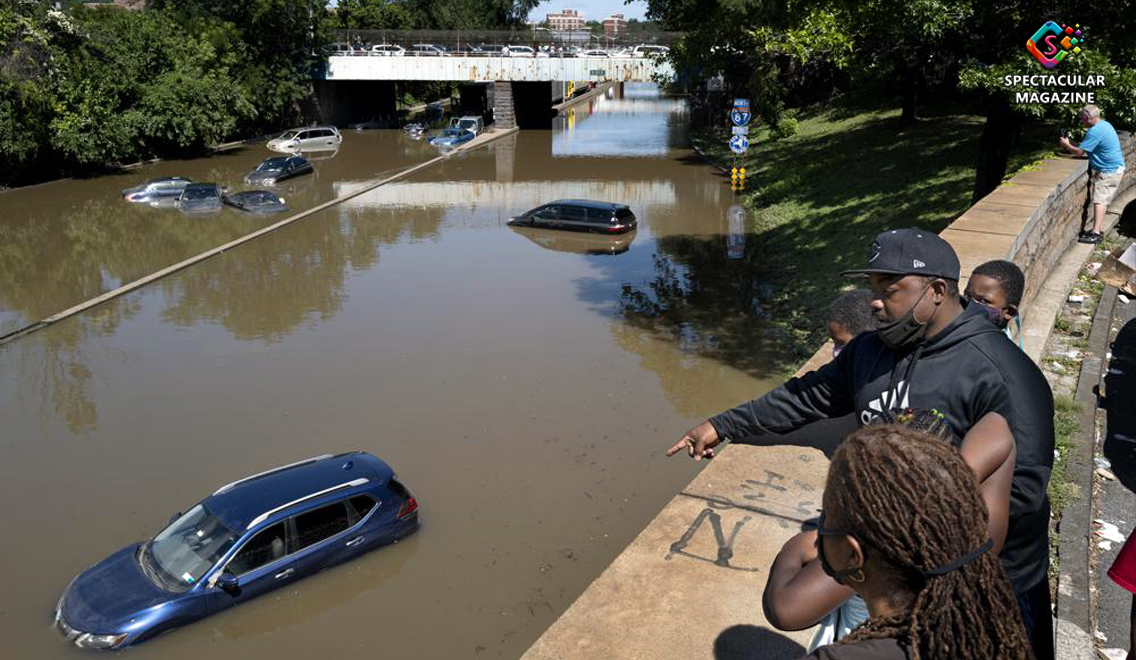More Than 45 Dead After Ida’s Remnants Blindside Northeast
NEW YORK (AP) — A stunned U.S. East Coast faced a rising death toll, surging rivers, and tornado damage Thursday (Sept. 2) after the remnants of Hurricane Ida walloped the region with record-breaking rain, drowning more than 45 people in their homes and cars.
In a region that had been warned about potentially deadly flash flooding but hadn’t braced for such a blow from the no-longer hurricane, the storm killed at least 46 people from Maryland to Connecticut on Wednesday night and Thursday morning.

At least 23 people died in New Jersey, Democratic Gov. Phil Murphy said. At least 13 people were killed in New York City, police said, 11 of them in flooded basement apartments, which often serve as relatively affordable homes in one of the nation’s most expensive housing markets. Suburban Westchester County reported three deaths.
Officials said at least five people died in Pennsylvania, including one killed by a falling tree and another who drowned in his car after helping his wife to escape. A Connecticut state police sergeant, Brian Mohl, perished after his cruiser was swept away. Another death was reported in Maryland.
Sophy Liu said she tried using towels and garbage bags to stop the water coming into her first-floor New York City apartment, but the flood rose to her chest in just a half-hour. She roused her son from bed, put him in a life jacket and inflatable swimming ring, and tried to flee, but the door stuck. She called two friends who helped her jar it loose.
“I was obviously scared, but I had to be strong for my son. I had to calm him down,” she recalled Thursday as medical examiners removed three bodies from a home down her Queens street.
In another part of Queens, water rapidly filled Deborah Torres’ first-floor apartment to her knees as her landlord frantically urged her neighbors below — among them a toddler — to get out, she said. But the water rushed in so strongly that she surmised they weren’t able to open the door. The three residents died.
“I have no words,” she said. “How can something like this happen?”

Ida’s soggy remnants merged with a storm front and soaked the Interstate 95 corridor, meteorologists said. Similar weather has followed hurricanes before, but experts said it was slightly exacerbated by climate change — warmer air holds more rain — and urban settings, where expansive pavement prevents water from seeping into the ground.
The National Hurricane Center had warned since Tuesday of the potential for “significant and life-threatening flash flooding” and major river flooding in the mid-Atlantic region and New England.
Still, New York Gov. Kathy Hochul and New York City Mayor Bill de Blasio said the storm’s strength took them by surprise.
“We did not know that between 8:50 and 9:50 p.m. last night, that the heavens would literally open up and bring Niagara Falls level of water to the streets of New York,” said Hochul, a Democrat who became governor last week after former Gov. Andrew Cuomo resigned.
De Blasio, also a Democrat, said he’d gotten a forecast Wednesday of 3 to 6 inches of rain for the day. The city’s Central Park ended up getting 3.15 inches in just one hour, surpassing the previous one-hour high of 1.94 inches during Tropical Storm Henri on Aug. 21.
Wednesday’s storm ultimately dumped over 9 inches of rain in parts of New Jersey, Pennsylvania, Massachusetts, and Rhode Island, and nearly as much on New York City’s Staten Island.
In Washington, President Joe Biden assured Northeast residents that federal first responders were on the ground to help clean up.

In New York, nearly 500 vehicles were abandoned on flooded highways, garbage bobbed in streaming streets, and water cascaded into the city’s subway tunnels, trapping at least 17 trains and disrupting service all day. Videos online showed riders standing on seats in swamped cars. All were safely evacuated, with police aiding 835 riders and scores of people elsewhere, including a 94-year-old man on a highway, Chief of Department Rodney Harrison said.
Police were still going door-to-door in flooded areas Thursday evening and didn’t have a firm number of unaccounted-for people, Harrison said.
In Elizabeth, New Jersey, rain and river flooding in an apartment complex killed four people and forced 600 from their homes, Mayor J. Christian Bollwage said.
Greg Turner, who lives elsewhere in the northern New Jersey city, said his 87-year-old mother started calling 911 when water began rising in her apartment at 8 p.m. He and his brother couldn’t get there because of the deluge.
As midnight approached, the water reached her neck, he said. Rescuers finally cut through the floor of the apartment above and pulled her to safety.
“She lost everything,” Turner said as he headed to a bank for money to buy his mother clothes and shoes.
In New Jersey’s Milford Borough, authorities said they found a man’s body in a car buried up to its hood in dirt and rocks.
The National Weather Service said the ferocious storm also spawned at least 10 tornadoes from Maryland to Massachusetts, including a 150-mph (241 kph) twister that splintered homes and toppled silos in Mullica Hill, New Jersey, south of Philadelphia.
On Sunday, Ida struck Louisiana as the fifth-strongest storm to ever hit the U.S. mainland, leaving 1 million people without power, maybe for weeks.


